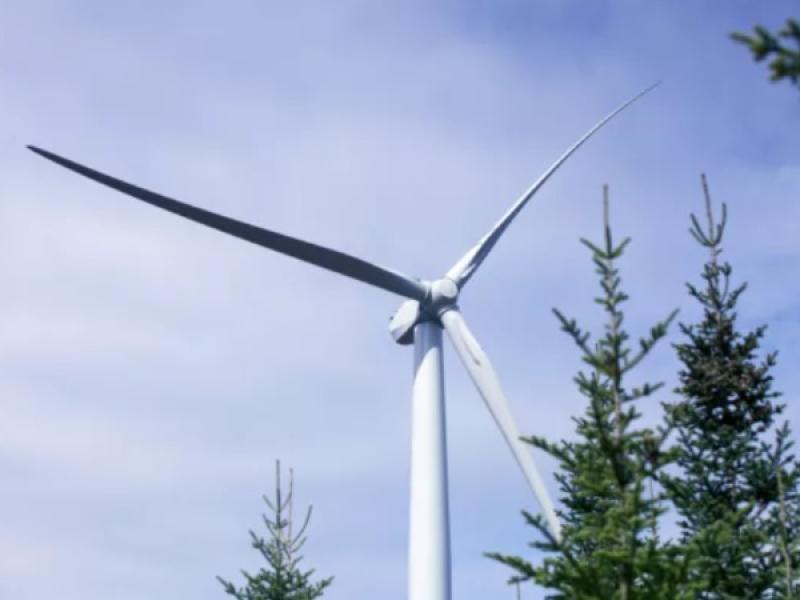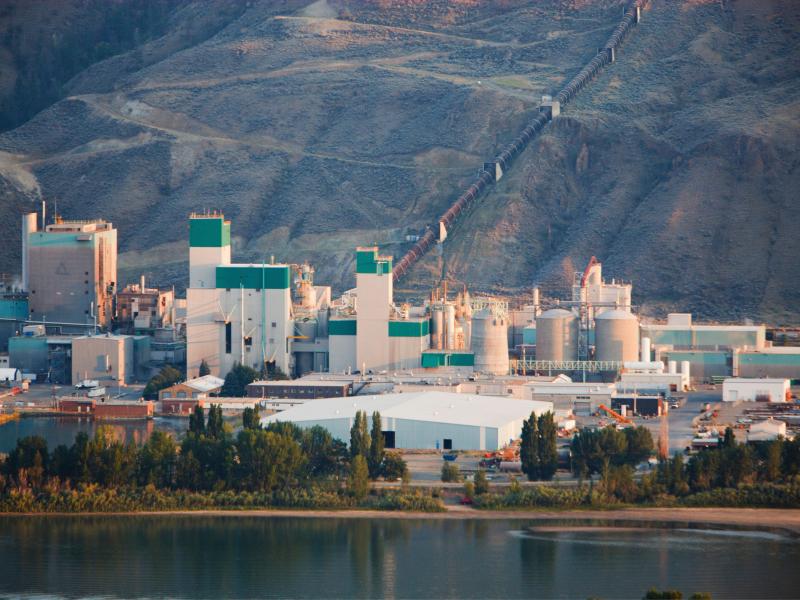
Wind energy is projected to make up approximately 70 per cent of planned renewable power additions in Canada over the next five years, the Canada Energy Regulator (CER) forecasts.
In the report Renewable Energy in Canada: Current Status and Near-Term Developments, the federal agency says it expects 6,206 megawatts (MW) of new wind capacity to enter the nation's grids by 2030. Solar is next at 2,337 MW and hydroelectricity at 202 MW.
Based on this forecast, renewables would make up almost 73 per cent of Canada's electricity capacity in 2030, compared to 70.5 per cent in 2025.
Quebec is expected to lead renewable capacity additions in the five-year scenario, followed by Alberta and British Columbia.
"Over the past decade, declining capital costs, evolving policy frameworks and improved efficiency have made renewable projects in Canada, both large and small, cost-competitive with conventional electricity sources,” Darren Christie, the chief economist of the CER, said in a release.
Under Canada’s Clean Electricity Regulations, the federal government is targeting a net-zero grid by 2050, demanding an immense build-out of renewable energy capacity.
“No matter what the political stripe of the government is, the need for more electricity and clean electricity is front and centre,” Evan Pivnick, the clean energy program manager of think tank Clean Energy Canada, said in an interview with Sustainable Biz Canada.
Quebec
Quebec, a province that generates over 99 per cent of its electricity from renewable sources, primarily hydroelectric, is expected to see 3,545 MW of renewable energy added to its provincial grid by 2030.
Wind capacity is expected to surge, rising from 4,192 MW in 2025 to 7,736.5 MW in 2030. The energy source is a “big winner” in many power procurements because it can be built in many provinces “incredibly cost effectively,” Pivnick said.
Notable wind assets recently completed or planned for development between 2025 and 2030 in the province are:
- the 300 MW Manicouagan Wind Project;
- the 200 MW Apuiat Wind Project; and
- the 196 MW Saint-Paul-de-Montminy Wind Project.
Alberta
Alberta's renewable power capacity is forecast to increase from 46.6 per cent in 2025 to 53 per cent by 2030. The province has 2,413 MW of planned renewable capacity additions.
While Alberta enforced strict limitations on renewables development that led to some projects being cancelled, the CER noted it is one of the sunniest and windiest Canadian provinces, making it a strong location to site renewable energy infrastructure. Its deregulated electricity market is another boon for renewable energy.
Alberta’s solar capacity is expected to almost double from 2,041.9 MW in 2025 to 4,073.8 MW in 2030. Wind capacity is projected to rise from 4,661.4 MW in 2025 to 5,061.4 MW in 2030.
Upcoming renewable projects in Alberta are:
- the 556 MW DC Homestead Solar Project;
- the 360 MW Brooks Solar Farm; and
- the Jurassic Solar and Battery Storage project designed to add 220 MW of solar capacity and 80 MW of battery storage.
If Alberta is interested in powering its planned data centres and industries with affordable electricity, “that is going to mean renewable power,” Pivnick said. However, the province is now standing at the bottom of the list for active renewable energy procurements, he added, citing data from the Canadian Renewable Energy Association.
British Columbia
British Columbia is expected to see 1,635 MW of renewables capacity added by 2030. Like Quebec, the province draws the vast majority of its electricity from clean sources such as hydroelectricity.
Wind capacity is expected to more than triple in British Columbia, from 745 MW in 2025 to 2,276 MW in 2030. Solar capacity is projected to tick up from 20 MW to 124 MW in the same time frame.
Some of the biggest renewables assets in the planning stages in British Columbia are:
- the 200 MW Nithi Mountain Wind Project, part of a major BC Hydro procurement; and
- the 197 MW Highland Valley Wind Project.
Ontario
Ontario, Canada’s economic engine, is not anticipated to lead in renewables additions going to 2030.
Solar capacity is expected to stagnate from 2025 to 2030 at 2,244 MW, with wind in a similar situation at an unchanged 5,532 MW.
But Ontario is expected to have major battery energy storage projects enter its grid from 2025 to 2030 due to high demand for energy reliability. The CER says almost 3,000 MW of new capacity is planned to come online by 2028, such as:
- the 390 MW Skyview 2 Battery Energy Storage Project; and
- the 300 MW Hagersville Battery Energy Storage Park.










